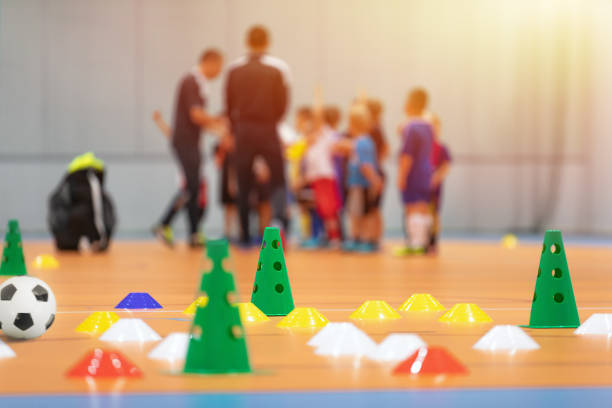Learning styles refer to the different ways in which individuals absorb, process, and retain information. Recognizing and understanding these styles can significantly enhance the effectiveness of educational methods and improve learning outcomes. This article explores various learning styles, their characteristics, and strategies for tailoring education to meet individual needs.

The Importance of Learning Styles
- Personalized Education:
- Enhanced Engagement: Understanding learning styles allows educators to create personalized learning experiences that cater to the unique preferences of each student, increasing engagement and motivation.
- Improved Retention: When educational methods align with a student’s preferred learning style, the ability to retain and recall information improves, leading to better academic performance.
- Diverse Classrooms:
- Inclusivity: Recognizing different learning styles ensures that educational practices are inclusive, accommodating diverse learners and reducing the risk of some students being left behind.
- Effective Teaching: Educators can employ a variety of teaching strategies to address the needs of all students, making their instruction more effective and impactful.
Major Learning Styles
- Visual Learners:
- Characteristics: Visual learners prefer to see information and visualize relationships between ideas. They benefit from diagrams, charts, videos, and written directions.
- Strategies: Use visual aids such as infographics, mind maps, and slides. Encourage note-taking with highlights and colors to emphasize key points.
- Auditory Learners:
- Characteristics: Auditory learners understand information better when it is heard. They benefit from lectures, discussions, audiobooks, and verbal explanations.
- Strategies: Incorporate group discussions, oral presentations, and listening activities. Use mnemonic devices and rhymes to aid memory.

- Kinesthetic Learners:
- Characteristics: Kinesthetic learners prefer hands-on experiences and learn best through movement and touch. They benefit from experiments, role-playing, and physical activities.
- Strategies: Incorporate lab experiments, field trips, and interactive activities. Use gestures and physical objects to explain concepts.
- Reading/Writing Learners:
- Characteristics: These learners prefer to read and write information. They benefit from textbooks, essays, and written assignments.
- Strategies: Provide ample reading materials, encourage note-taking, and assign writing tasks. Use lists, glossaries, and written instructions.
Applying Learning Styles in Education
- Assessment of Learning Styles:
- Identify Preferences: Use surveys, questionnaires, and observations to identify students’ preferred learning styles. Tools such as the VARK questionnaire can help assess visual, auditory, reading/writing, and kinesthetic preferences.
- Student Reflection: Encourage students to reflect on their learning experiences and identify which methods help them understand and retain information best.
- Differentiated Instruction:
- Variety in Teaching Methods: Incorporate a mix of teaching methods to address different learning styles. Use visual aids, auditory materials, hands-on activities, and written instructions in lessons.
- Flexible Assignments: Offer flexible assignment options that allow students to demonstrate their understanding in ways that align with their learning styles. For example, allow students to choose between writing an essay, creating a presentation, or conducting a project.

- Technology Integration:
- Digital Tools: Utilize technology to support different learning styles. Educational software, apps, and online resources can provide interactive and multimedia-rich content that caters to visual, auditory, and kinesthetic learners.
- Blended Learning: Combine traditional classroom instruction with online learning platforms to create a blended learning environment. This approach can offer diverse resources and activities that appeal to various learning preferences.
- Active Learning Strategies:
- Interactive Activities: Incorporate interactive activities such as group projects, discussions, and problem-solving tasks. These activities engage students actively and cater to multiple learning styles simultaneously.
- Peer Teaching: Encourage peer teaching and collaboration. Students can learn from each other’s strengths and preferred learning methods, enhancing their understanding and retention.
- Continuous Feedback:
- Formative Assessment: Use formative assessments to provide ongoing feedback on students’ learning processes. This helps identify areas where students may need additional support or different instructional approaches.
- Adapt Teaching Methods: Based on feedback, continuously adapt teaching methods to better suit the learning styles of the students. Flexibility and responsiveness are key to effective education.
Challenges and Considerations
- Overemphasis on Learning Styles:
- Balanced Approach: While recognizing learning styles is important, it is also crucial not to overemphasize them to the point of limiting students’ exposure to diverse teaching methods. A balanced approach that incorporates various strategies can help students develop a well-rounded skill set.
- Resource Limitations:
- Practical Constraints: Implementing a variety of teaching methods may require additional resources and time. Educators should seek creative solutions and utilize available resources efficiently to address diverse learning needs.
- Student Awareness:
- Self-Awareness: Encourage students to become aware of their learning styles and advocate for their learning preferences. Teaching students about different learning styles can empower them to take an active role in their education.
Conclusion
Understanding and accommodating different learning styles is essential for creating effective and inclusive educational environments. By recognizing the unique preferences of visual, auditory, kinesthetic, and reading/writing learners, educators can tailor their teaching methods to enhance engagement, retention, and overall academic success. A balanced and flexible approach, combined with continuous feedback and adaptation, ensures that all students have the opportunity to thrive and achieve their full potential. Embrace the diversity of learning styles to foster a dynamic and supportive learning environment that meets the needs of every student.

